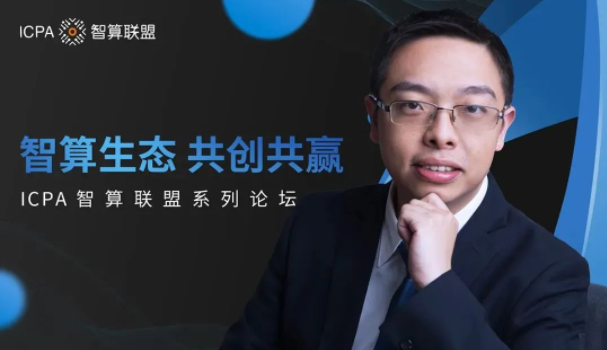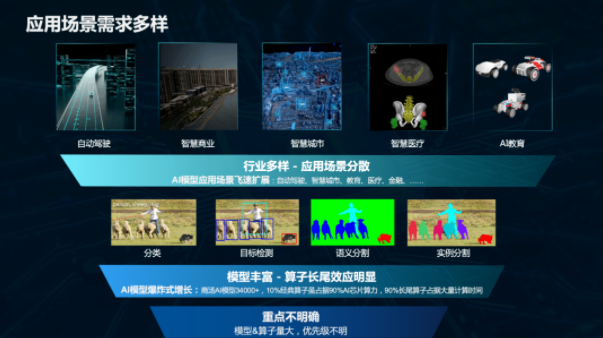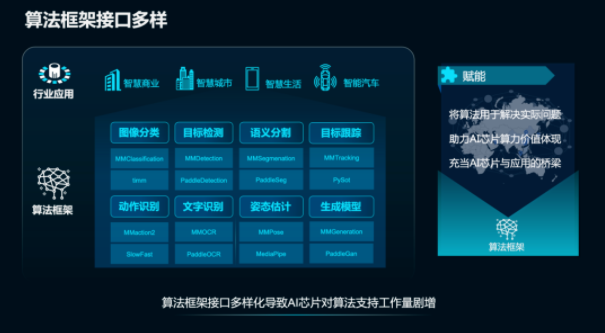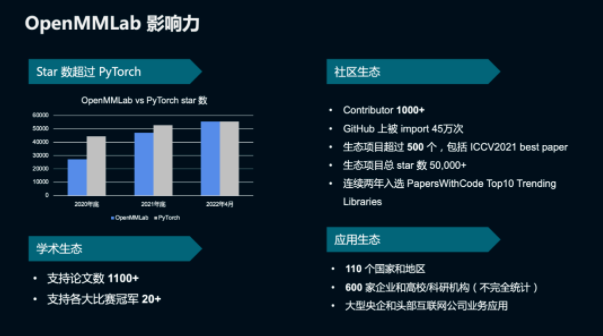On June 14, the first session of the Artificial Intelligence Computing Power Industry Ecological Alliance (ICPA) Forum Series themed by “Intelligent Computing Ecology, Cooperation and Win-Win” was successfully held.
Sun Yue, Deputy Director of the Artificial Intelligence Development Division of the Shanghai Municipal Commission of Economy and Informatization, and Yang Fan, Chairman of the ICPA, Co-founder of SenseTime, and Vice President of the Group, delivered speeches. Lin Dahua, Co-founder of SenseTime and Chief Scientist of SenseCore, Zhou Bin, CTO of Huawei Ascend Computing Business, Lu Tao, President of Graphcore Greater China and Global Chief Revenue Officer, Zhang Yalin, Founder and COO of Enflame, and Liu Bo, Deputy General Manager of SSCT delivered keynote speeches and discussed the win-win approach to accelerating the industrialization of AI computing power and the construction of algorithm ecology.
Among them, Professor Lin Dahua delivered a wonderful keynote speech themed by “Algorithm Framework: the Link between AI Chips and Commercial Value”, in which he said: “The development of AI chips and the computing industry derived from them cannot be achieved by any company alone. The vision requires institutions and manufacturers with different upstream and downstream roles to jointly build a prosperous ecosystem. Under such a system, SenseTime plays a very important role. How to coordinate the upstream and downstream of technology is also a topic we all face together.”
Professor Lin Dahua's speech is summarized below:

Algorithms Are the Key Bridge Connecting Application Value and Chip Computing Power
The core of artificial intelligence and intelligent computing is the AI computing chip. Whether it is a general-purpose graphics processor represented byGPU or AI-specific computing chip that has emerged in recent years, they all constitute the core of the entire AI computing power.
For users, the application of AI technology in various vertical fields such as autonomous driving, smart commerce, smart city, and smart healthcare has truly brought the value of artificial intelligence to production, life, and work.

The wide application in different industries is supported by a series of key AI algorithms, such as classification, detection, segmentation, and other algorithms in the field of computer vision. Although these algorithms are divided into several small categories, each category has a very fast iteration and evolution speed, and also many types. At present, SenseTime has produced more than 30,000 algorithm models for different industry applications.
These algorithm models pose great challenges to hardware adaptation, since the adaptation of each algorithm model requires a lot of efforts and different applications involve different algorithms. Algorithms are the key bridge connecting application value and chip computing power.
In the field of artificial intelligence, algorithm researchers do not directly write algorithms on the underlying API provided by a chip, because most researchers and algorithm engineers do not understand the architecture of the chip, nor do they need to understand it in their specialties.
Therefore, in the middle of connecting algorithm researchers and underlying computing infrastructure, a series of basic software systems of deep learning frameworks have been derived, such as TensorFlow, PyTorch, MindSpore, and SenseParrots self-developed by SenseTime. Each training framework plays a different role in the industry and has embarked on its own differentiated development path.
Since there are multiple training frameworks between an algorithm and a chip, and different frameworks come from different institutions and companies, there is no fixed interface, which leads to the fact that the AI training chip must not only adapt to different frameworks, but also support diverse algorithms. On the other hand, the diversification of algorithm framework interfaces leads to a sharp increase in the workload of the AI chip for algorithm support, which causes high adaptation costs and thus becomes an obstacle to the rapid iteration of AI training chips and market entry.

Build an Efficient and Prosperous AI Ecosystem with an Open-source Algorithm System
To build an ecosystem that can help chip development, the most important thing is to break down existing obstacles and bottlenecks, so as to promote the upstream and downstream common development and prosperity of the entire ecosystem.
How can we achieve this goal? Algorithms directly support applications and, from scene classification and license plate recognition algorithms in the field of smart city to semantic segmentation and lesion detection algorithms in the field of medical image analysis, usually go through a decomposition process based on application scenarios, finally forming a big algorithm family tree. After years of development, SenseTime has accumulated rich experience in the field of AI algorithms, but only by using these algorithms for the entire industry can it guide the upstream and downstream development of the entire industry and maximize its value. Based on the understanding of algorithm decomposition from the perspective of applications, SenseTime launched the OpenMMLab open-source algorithm system in 2018.
In the past 4 years, OpenMMLab's international influence has continued to grow, and it currently has 58,000 stars on GitHub, surpassing the industry's top deep learning framework PyTorch. At the same time, OpenMMLab has also supported the publication of thousands of papers and assisted dozens of contestants to win championships in vertical fields. In addition, it has made achievements in terms of ecological influence.

OpenMMLab is widely used in the commercial field. At present, more than 600 enterprises and scientific research institutions use OpenMMLab for technology research and development, including many large state-owned enterprises, leading technology enterprises, and Internet enterprises, forming a sweeping influence.
Based on the open-source algorithm system, SenseTime hopes to realize the two-way value guidance involving both training frameworks and AI chips, and join hands with industry peers to build an efficient upstream and downstream ecosystem of artificial intelligence.
Build a Standardized System and Technical Infrastructure for the Collaborative Development of Algorithm Chips
In order to promote the collaborative development of training frameworks and AIchips, SenseTime decomposes algorithms into various operators, and informs developers which operators are the most important in the entire algorithm layer and application scenario layer. Such guidance can help industry partners to apply limited computing power resources to truly valuable business scenarios.
At the technical level, SenseTime has built two standardized systems, namely the algorithm classification system and the standard operator interface system.
For the construction of the algorithm classification system, based on community feedback, SenseTime initially divides algorithms into three levels from multiple dimensions such as influence, performance, and deployment breadth: P0, P1, and P2:
· P0 indicates algorithms that any chip must fully support;
· P1 indicates algorithms that are used more in business scenarios, but are not completely necessary;
· P2 indicates algorithms that are relatively less used and considered.
Based on algorithm classification, SenseTime has formed a complete set of “business application-oriented and algorithm-based” adaptation and evaluation systems for training frameworks, inference engines, training chips, and cluster environments, so as to provide downstream software and chip manufacturers with a very clear optimization and adaptation guideline.
For the standard operator interface system, SenseTime extracts the standardized operators according to the guidance of algorithms. In this respect, SenseTime has completed two important tasks:
· Unify the operator interface and function signature, including information such as operator interface and input and output; and
· create a conformance test suite, including standardized test cases and related tool systems, which can verify the correctness of operators and evaluate the execution efficiency in different environments and configurations.
These two achievements provide a standardized starting point for evaluating different chips. And the whole set of technical infrastructure can promote industrial collaboration. In addition, the adaptation methods today also have great advantages compared with traditional methods. The one-to-one adaptation of traditional chips and frameworks makes it difficult to be reused across chips or across scenarios.
SenseTime's many-to-many chip-framework adaptation process based on the standard operator interface system can minimize communication costs, work difficulty, and adaptation workload. Hundreds of standard operator interfaces can be connected at one time, and after passing the conformance test, can be automatically adapted to different algorithms and chips to enable faster iterations.
In the future, SenseTime will be committed to developing more AI technologies, actively promoting cooperation and collaboration between upstream and downstream industries, and helping to streamline the closed loop from chips to value realization more efficiently.